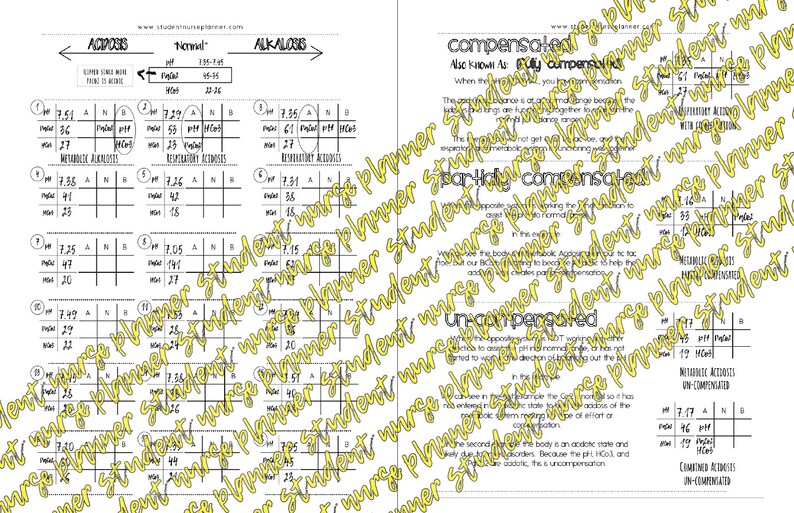

The alveolar–arterial gradient (P AO 2–P aO 2) can then be calculated. Where P IO 2 is the partial pressure of oxygen in the inspired air (approximately 21 kPa when breathing room air, but 24 kPa when using a 24% Venturi mask and so on) and 0.8 is the ‘respiratory quotient’ (ie the ratio between the CO 2 produced and the O 2 utilised). The P aO 2 is measured in the ABG, the P AO2 has to be calculated using the alveolar gas equation:

To do this, one needs to measure the alveolar–arterial gradient, that is, the difference between the alveolar partial pressure of oxygen (P AO 2) and the P aO 2. However, when the P aCO 2 is high, one has to work out whether the low P aO 2 can be accounted for by underventilation alone or whether there is an additional type 1 problem (ie whether there is anything wrong with the lungs). When the only derangement is P aO 2, clearly the failure is type 1. Given that the two conditions result from entirely different mechanisms, with implications for treatment, one should be able to distinguish between them. Indeed, the combination is common in severe chronic obstructive pulmonary disease, for example. Type 1 and type 2 respiratory failure can occur simultaneously. When P aO 2 is low yet P aCO 2 normal, type 1 respiratory failure is present, and such a result implies lung (or pulmonary -vascular) disease. However, provided that overall ventilation is normal, P aCO 2 is maintained. In such circumstances, oxygen delivered to the lungs by ventilation is handled inefficiently and P aO 2 falls. Lung (or pulmonary vascular) disease disturbs the delicate ventilation–perfusion (V/Q) matching system. Type 2 respiratory failure results from underventilation, which can occur even in the context of healthy lungs. When underventilation occurs, for what ever reason (eg muscular weakness or opiate overdose), the P aCO 2 will increase (the definition of underventilation) and P aO2 must decrease (even if the lungs are perfectly healthy). Type 2 respiratory failure is extremely an issue of ventilation, that is, the business of pumping air in and out of the lungs. Type 1 and type 2 respiratory failures are due to entirely different mechanisms. It is sometimes thought that type 2 respiratory failure is simply a more severe version of type 1. Only then, will it drive ventilation to prevent harmful levels of hypoxia. Only when hypoxia is more severe (approximately P aO 2 <8 kPa) does the hypoxic centre ‘wake up’ and take note. Therefore, if, for example, a metabolic alkalosis were to develop, ventilation would fall (at the expense of a small reduction in oxygenation) to retain CO 2 and, thus, return pH to the normal range. This ‘margin of oxygen safety’ enables the respiratory system to focus on pH and to adjust ventilation (to ‘blow off’ or retain CO 2) without the fall in oxygenation that underventilation would bring causing any difficulties. This is because individuals generally live at a level of oxygenation well above that which is required to sustain life. Although there is an additional receptor (the hypoxic centre) in the brain stem that monitors P aO 2, it spends most of it time ‘asleep’ and is rather unconcerned about minor fluctuations in the level of oxygenation. In health, we are driven to take our next breath by the arterial partial pressure of carbon dioxide (P aCO 2), which is intimately linked to pH.

Publisher: Churchill Livingstone 1 edition (September 21, 2007)The respiratory system – oxygenation vs pH.Written in a simple style and presenting the concepts in a straightforward manner.Utilises worked examples to allow the reader to gain confidence in interpreting ABGs and appreciate the usefulness of the test in a variety of different clinical settings.A practical guide written for all those using this test and interpreting the results.
Abgs made easy pdf series#
The first part explains the technique, the values obtained and common patterns of abnormalities, while the second part comprises a series of worked examples and case scenarios to allow the reader to put this system into practice. This book covers all aspects of the arterial blood gas in a simple, user-friendly manner. Its importance as a key tool in the work-up of acutely unwell patients rivals that of the ECG and the chest x-ray. Iain Hennessey MBChB(Hons) BSc(Hons) FRCS MMIS (Author), Alan Japp MBChB(Hons) BSc(Hons) MRCP (Author)Īrterial blood gas analysis plays an indispensable role in the assessment and management of patients with a huge range of acute medical and surgical problems.


 0 kommentar(er)
0 kommentar(er)
